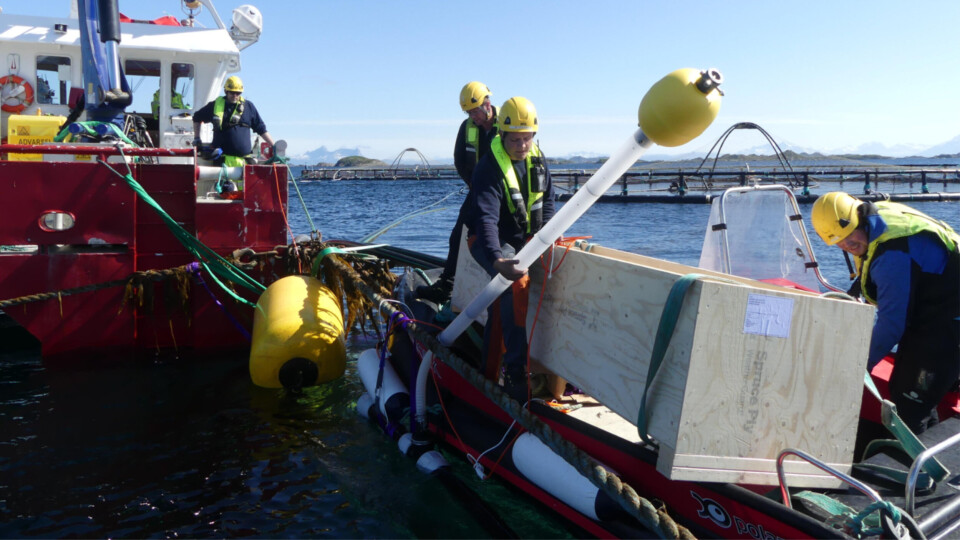
Light-and-smell traps ‘reduced lice infestation’
A novel system that uses light and scent to trap sea lice before they enter salmon pens and attach to fish has reduced lice infestation during full-scale trials at a farm, according to an independent report.
Fish health services provider STIM (formerly Europharma) assessed the effect of the Blue Lice system being used at Ellingsen Seafood’s salmon farm at Skarvhausen, northern Norway.
STIM concluded that the system helped to reduce lice infestation, stagnate lice development over time and reduce treatments.
Seven traps
Norwegian start-up Blue Lice AS installed seven of the lice traps at Skarvhausen in July last year. The system has been operational since then.
In the STIM report, threads have been drawn between the years 2017 and 2020 to get a comparison that corresponded to the same production level. STIM said the purpose of the report was to assess all factors that could affect the lice level at the site, to try to draw concrete conclusions about the Blue Lice system’s probable effect on the lice level.
To do this, water flow in the area, production at other nearby localities, development in lice levels at various stages and completed lice treatments were all included in the assessment.
Flatter development
When looking at the development through the period for the various stages of lice, there are differences between 2017 and 2020 that STIM believes are worth looking into. The results show a clearly smoother / flatter development in the total lice level in 2020 and much more fluctuating / explosive developments in 2017. This is despite the fact that in 2017 the farm used lumpfish which optimally should have kept the lice level even lower over time. Here, the facility reports that the lumpfish used in 2017 had not functioned well as lice eaters and had been taken out of the calculation.
“Even when the lumpfish are removed as a factor in this assessment, we see a stronger development among the mobile and sexually mature lice stages in 2017 than in 2020,” STIM writes in the report.
In September 2017 treatments were required which had a good effect and got lice levels under good control. In 2020, only one treatment was run to stagnate the level of motile and sexually mature lice.
Small but clear differences
If you class the cages located in the north / west of the facility, which are “outside” the Blue Lice system, as one group and the cages located in the south / east, “within” the system, as another group and consider the development in the average lice level for the periods between the lice treatments, there are clear differences between the groups.
“The cages located in the south-east and which are most ‘protected’ by the Blue Lice system have on average a lower lice level most of the weeks between treatments. This difference is not large, but relatively consistent over time,” stated STIM.
As with other preventive measures against lice, STIM believes that there is a high probability that if the entire farm had been better shielded with Blue Lice’s systems, then experience suggests that the farm as a whole probably would have had an even lower lice level throughout the year.
A more detailed version of this article (in Norwegian) is included in the latest edition of Norsk Fiskeoppdrett magazine, which is available online here (subscription required).






















































